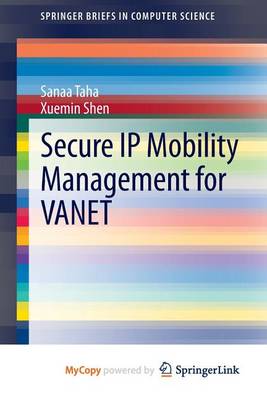SpringerBriefs in Computer Science
5 total works
Sustainable Wireless Networks
by Zhongming Zheng, Lin X. Cai, and Xuemin Shen
Security and Privacy in Mobile Social Networks
by Xiaohui Liang, Rongxing Lu, Xiaodong Lin, and Xuemin Shen
This book focuses on three emerging research topics in mobile social networks (MSNs): privacy-preserving profile matching (PPM) protocols, privacy-preserving cooperative data forwarding (PDF) protocols, and trustworthy service evaluation (TSE) systems. The PPM helps two users compare their personal profiles without disclosing the profiles. The PDF helps users forward data to their friends via multiple cooperative relay peers while preserving their identity and location privacy. The TSE enables users to locally share service reviews on the vendors such that users receive more valuable information about the services not only from vendors but also from their trusted social friends. The authors address both theoretic and practical aspects of these topics by introducing the system model, reviewing the related works, and presenting the solutions. Security and Privacy for Mobile Social Networks further provides the security analysis and the performance evaluation based on real-trace simulations. It also summarizes the future research directions for this rapidly growing area of research. The book will be valuable for researchers and practitioners who work with mobile social networks, communication platforms, wireless communication techniques, and internet applications.
"Suitable for any type of reader as an introduction to the topic... The chapters are well motivated and presented... It is recommended for researchers." -ACM Computing Reviews, 21 July 2014
Throughout the brief, the authors propose new schemes and protocols to increase the security of IP addresses within VANETs including an anonymous and location privacy-preserving scheme for the MIPv6 protocol, a mutual authentication scheme that thwarts authentication attacks, and a fake point-cluster based scheme to prevent attackers from localizing users inside NEMO-based VANET hotspots. The brief concludes with future research directions. Professionals and researchers will find the analysis and new privacy schemes outlined in this brief a valuable addition to the literature on VANET management.
Querying Over Encrypted Data in Smart Grids
by Mi Wen, Rongxing Lu, and Xiaohui Liang
Mobile Edge Caching in Heterogeneous Vehicular Networks
by Huaqing Wu, Feng Lyu, and Xuemin Shen
The topics addressed in this book are crucial for both the academic community and industry, since mobile edge caching in heterogeneous networks has become an essential building block for the communication systems. The systematic principle of this book provides valuable insights on the efficient exploitation of heterogeneous network resources to fully unleash their differential merits in supporting vehicular applications. In addition, this book considers different HetVNet scenarios from terrestrial HetVNets to air-ground HetVNets and space-air-ground HetVNets, which can provide a general overview for interested readers with a comprehensive understanding of applying mobile edge caching techniques in enhancing vehicular content delivery performance, and offer a systematized view for researchers and practitioners in the field of mobile edge caching to help them design and optimize the desired vehicular content delivery systems.
- Provides in-depth studies on mobile edge content caching and delivery scheme design for three typical HetVNet scenarios;
- Comprehensively covers the analysis, design, and optimization of the mobile edge content caching-assisted HetVNets;
- Systematically addresses vehicle mobility, network service interruptions, and dynamic service request distribution issues in the mobile edge content caching and delivery.




